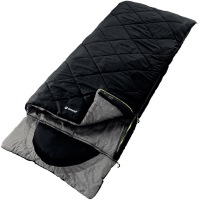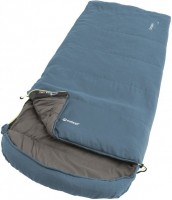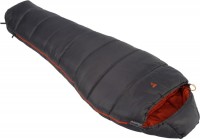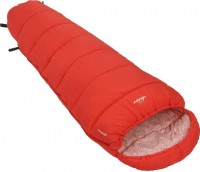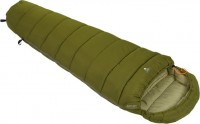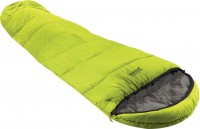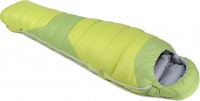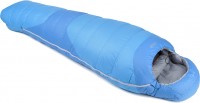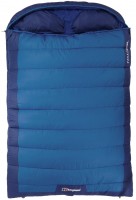Sleeping Bags Nordisk
All Sleeping Bags Advanced filters → |
You might be interested in
Articles, reviews, useful tips
All materials
Sleeping bag temperature conditions: recommendations for choosing
Delving into the comfort temperatures for men and women, in order to avoid freezing in a sleeping bag

How to store a sleeping bag and maintain it?
Recommendations for maintaining, use and storage that will extend the life of your sleeping bag

TOP-5 cocoon sleeping bags for temperatures of -10 °C
Sleeping bags that should provide a comfortable overnight stay in nature even in winter

How to choose a sleeping bag: the main rules and recommendations
Everything you need to know about sleeping bag form factors, types, and temperature ratings.

How to choose a tent for different usage scenarios?
Let's figure out how to choose tourist tents for a hike, camping or expedition

How to go camping without catching a cold: 7 tips for choosing the right equipment
Let's figure out what equipment to take so that when you go camping you will not experience inconvenience due to cold weather.
Sleeping Bags: specifications, types
By features
— Expeditionary. The most "extreme" type of sleeping bags, designed primarily for use on long trips, including in the cold season and in high mountains. A prerequisite for expedition bags is a low extreme temperature (see below) — -20 °C and below; exceptions are found only among children's models. As for the design, bags of this type are often equipped with hoods, thermal collars, they can provide fastening (for more details, see..."Characteristics").
— Trekking. Sleeping bags designed primarily for use on hiking or cycling trips. Their key features are compactness and light weight, which make it easy to transport on your own. Because of this, trekking sleeping bags are much more expensive than camping ones with similar characteristics — lightweight and at the same time high-quality materials are not cheap. So for a permanent stay in one place, it hardly makes sense to pay attention to this category. Also note that sleeping bags for this purpose are designed mainly for use in the warm season — in spring / autumn and/or summer — and are made mainly in the form of cocoons, although there are exceptions to both rules.
— Camping. A type of sleeping bag designed to provide comfort while constantly staying in one place in relatively uncomplicated conditions. Such a bag can be useful, for example, at a picnic with an overnight stay, a multi-day summer festival, etc.; but for long-term wearing “on oneself”, camping models are poorly suited due to their relatively large dimensions and weight. The seasonality of sleeping bags for this purpose may be different, but it is worth noting that most of these products are made in the form of blanket bags (see "Type").
— Trekking. Sleeping bags designed primarily for use on hiking or cycling trips. Their key features are compactness and light weight, which make it easy to transport on your own. Because of this, trekking sleeping bags are much more expensive than camping ones with similar characteristics — lightweight and at the same time high-quality materials are not cheap. So for a permanent stay in one place, it hardly makes sense to pay attention to this category. Also note that sleeping bags for this purpose are designed mainly for use in the warm season — in spring / autumn and/or summer — and are made mainly in the form of cocoons, although there are exceptions to both rules.
— Camping. A type of sleeping bag designed to provide comfort while constantly staying in one place in relatively uncomplicated conditions. Such a bag can be useful, for example, at a picnic with an overnight stay, a multi-day summer festival, etc.; but for long-term wearing “on oneself”, camping models are poorly suited due to their relatively large dimensions and weight. The seasonality of sleeping bags for this purpose may be different, but it is worth noting that most of these products are made in the form of blanket bags (see "Type").
Type
- Cocoon bag. Cocoon bags have an uneven width: they are wider at the shoulders, and narrow towards the legs. This form is considered optimal for keeping warm due to the small (compared to a blanket bag) area of \u200b\u200bthe outer surface of the sleeping bag, as well as the fact that it is quite dense to lie in a cocoon. As a consequence, most camping and expedition sleeping bags are of this type (see "Intended Use"). The disadvantage of cocoons is somewhat le...ss comfort than blanket bags.
- Blanket bag. Bags of this type are rectangular in shape, with a uniform width along the entire length. They are somewhat less suitable for low temperatures than cocoons, however, they are more convenient and versatile: there is more free space in the bag itself, and the design usually allows you to unzip it completely and use it as a blanket or bedding.
- Bag-overalls. Sleeping bag, made, in accordance with the name, in the form of overalls and having sleeves and legs. In such a product, you can not only sleep, but also move around the camp; some manufacturers directly position the overalls as a solution for tech "who hate to get out of a warm sleeping bag in the morning." Such “clothing”, as a rule, is not an obstacle either during passive recreation like gatherings around a fire, or even during active activities like chopping firewood. The design usually provides cutouts for the hands, as well as removable "boots" that can be removed before putting on more serious shoes or used as "slippers" for walking a few meters. In terms of direction (see above), overalls are usually camping bags - more traditional designs are better suited for trekking and even more expeditionary use.
— Bivouac. A bivouac bag is a windproof and waterproof cover for a sleeping bag. Initially, the bivouac was created for mountain climbing and winter hiking. Bivi come with an arch at the head and without it. Bivouac bags are made of breathable membrane fabric. They allow you to use sleeping bags with rugs or mats of different seasonality. The bivouac takes up minimal space in a backpack, is light in weight, does not require selection of an installation site, and dries quickly after rain. This attribute of tourist ammunition will come in handy for tech who do not want to take a tent on a hike or sleep under an awning.
- Blanket bag. Bags of this type are rectangular in shape, with a uniform width along the entire length. They are somewhat less suitable for low temperatures than cocoons, however, they are more convenient and versatile: there is more free space in the bag itself, and the design usually allows you to unzip it completely and use it as a blanket or bedding.
- Bag-overalls. Sleeping bag, made, in accordance with the name, in the form of overalls and having sleeves and legs. In such a product, you can not only sleep, but also move around the camp; some manufacturers directly position the overalls as a solution for tech "who hate to get out of a warm sleeping bag in the morning." Such “clothing”, as a rule, is not an obstacle either during passive recreation like gatherings around a fire, or even during active activities like chopping firewood. The design usually provides cutouts for the hands, as well as removable "boots" that can be removed before putting on more serious shoes or used as "slippers" for walking a few meters. In terms of direction (see above), overalls are usually camping bags - more traditional designs are better suited for trekking and even more expeditionary use.
— Bivouac. A bivouac bag is a windproof and waterproof cover for a sleeping bag. Initially, the bivouac was created for mountain climbing and winter hiking. Bivi come with an arch at the head and without it. Bivouac bags are made of breathable membrane fabric. They allow you to use sleeping bags with rugs or mats of different seasonality. The bivouac takes up minimal space in a backpack, is light in weight, does not require selection of an installation site, and dries quickly after rain. This attribute of tourist ammunition will come in handy for tech who do not want to take a tent on a hike or sleep under an awning.
Suitable for
— Universal. Sleeping bags designed for adult tourists of both sexes are the most convenient when choosing and, as a result, a common variety. However, note that the rules for choosing a sleeping bag for temperature for men and women are somewhat different; see "comfort limit" for details.
— For women. Specialized sleeping bags designed for women. In general, with a similar body type and fitness level, women are more l...ikely to get cold than men, and hypothermia can have more serious consequences for them. Thus, many manufacturers produce this type of bag. The differences between such products and universal sleeping bags can be different, depending on the specialization (see "By Direction"). So, expedition and tracking models, usually made in the form of cocoons (see "Type"), have a special shape and additional insulation based on the structure of the female body; and the temperature regimes in them can be indicated specifically for women, and when choosing, you do not need to take into account the amendments characteristic of universal sleeping bags (for more details, see "t comfort limit"). Camping models for this purpose, in turn, may differ from universal ones only in appearance.
— For children. Sleeping bags designed for children differ from "adult" models primarily in smaller sizes. In addition, they can have a characteristic bright design, as well as length adjustment to adjust to the figure as the child grows. It is worth noting that in relatively warm weather — if the ambient temperature is much higher than the comfort temperature of the sleeping bag — a universal "adult" bag is quite suitable for a child. So from a practical point of view, it makes sense to specifically use a children's sleeping bag mainly at relatively low temperatures (about +12 °C or less). However, nothing prevents you from buying a model of this type for more favorable conditions.
— For women. Specialized sleeping bags designed for women. In general, with a similar body type and fitness level, women are more l...ikely to get cold than men, and hypothermia can have more serious consequences for them. Thus, many manufacturers produce this type of bag. The differences between such products and universal sleeping bags can be different, depending on the specialization (see "By Direction"). So, expedition and tracking models, usually made in the form of cocoons (see "Type"), have a special shape and additional insulation based on the structure of the female body; and the temperature regimes in them can be indicated specifically for women, and when choosing, you do not need to take into account the amendments characteristic of universal sleeping bags (for more details, see "t comfort limit"). Camping models for this purpose, in turn, may differ from universal ones only in appearance.
— For children. Sleeping bags designed for children differ from "adult" models primarily in smaller sizes. In addition, they can have a characteristic bright design, as well as length adjustment to adjust to the figure as the child grows. It is worth noting that in relatively warm weather — if the ambient temperature is much higher than the comfort temperature of the sleeping bag — a universal "adult" bag is quite suitable for a child. So from a practical point of view, it makes sense to specifically use a children's sleeping bag mainly at relatively low temperatures (about +12 °C or less). However, nothing prevents you from buying a model of this type for more favorable conditions.
Seasonality
The season for which the sleeping bag was originally intended. Note that many models are designed for more than one season — winter and spring / autumn or spring / autumn and summer ; there are even all-season products. However, anyway, when buying, it is worth clarifying not only this nuance, but also the specific temperature characteristics of the selected model (see below).
In genera...l, the assignment of a sleeping bag to one or another seasonality largely depends on how the manufacturer positions this model. However, in each category there are some common features, here they are:
— Winter. Sleeping bags suitable for winter usually meet the following minimum requirements: at least the temperature of the comfort limit in them should be below zero, and if it is higher, then the extreme temperature should be low enough (-20 °C or less). Also, a sleeping bag is definitely considered winter if its comfort temperature is below -5 °C.
— Spring/Autumn. Sleeping bags designed for the off-season should be comfortable enough both in warm weather and in case of sudden frosts. Therefore, the comfort temperature in them can be quite low — up to -5 °C inclusive. On the other hand, there are also combined "off-season-summer" models, where the extreme temperature is as much as +10 °C. So the specific characteristics of such a sleeping bag should be specified especially carefully.
— Summer. A summer sleeping bag should provide comfort at high temperatures, so many models from this category have a comfort t ° of the order of +15 °C, or even higher. At the same time, summer seasonality can also be indicated for models with lower comfort temperatures (even below zero). In such cases, the manufacturer proceeds from the fact that if it is hot in the sleeping bag, you can open up or undress (recall, the temperature regimes are indicated for a person in thermal underwear).
In genera...l, the assignment of a sleeping bag to one or another seasonality largely depends on how the manufacturer positions this model. However, in each category there are some common features, here they are:
— Winter. Sleeping bags suitable for winter usually meet the following minimum requirements: at least the temperature of the comfort limit in them should be below zero, and if it is higher, then the extreme temperature should be low enough (-20 °C or less). Also, a sleeping bag is definitely considered winter if its comfort temperature is below -5 °C.
— Spring/Autumn. Sleeping bags designed for the off-season should be comfortable enough both in warm weather and in case of sudden frosts. Therefore, the comfort temperature in them can be quite low — up to -5 °C inclusive. On the other hand, there are also combined "off-season-summer" models, where the extreme temperature is as much as +10 °C. So the specific characteristics of such a sleeping bag should be specified especially carefully.
— Summer. A summer sleeping bag should provide comfort at high temperatures, so many models from this category have a comfort t ° of the order of +15 °C, or even higher. At the same time, summer seasonality can also be indicated for models with lower comfort temperatures (even below zero). In such cases, the manufacturer proceeds from the fact that if it is hot in the sleeping bag, you can open up or undress (recall, the temperature regimes are indicated for a person in thermal underwear).
Double
A bag designed for two people at once — for example, a married couple.
Most 2-person bags are camping (see 'By Destination') and other light duty items, and by design they are quilts (see 'Type'). However, among such products there is also more “serious” equipment — trekking and even expeditionary direction. Note that a sleeping bag for two can also be arranged by fastening two single bags (for this possibility, see "Equipment"); however, double mode...ls have their merits. Firstly, such a sleeping bag is more compact and easy to transport than two single ones with similar characteristics; secondly, the bag is immediately ready for use by two people, no need to fiddle with fastening; thirdly, the absence of unnecessary fasteners has a positive effect on reliability and comfort.
Most 2-person bags are camping (see 'By Destination') and other light duty items, and by design they are quilts (see 'Type'). However, among such products there is also more “serious” equipment — trekking and even expeditionary direction. Note that a sleeping bag for two can also be arranged by fastening two single bags (for this possibility, see "Equipment"); however, double mode...ls have their merits. Firstly, such a sleeping bag is more compact and easy to transport than two single ones with similar characteristics; secondly, the bag is immediately ready for use by two people, no need to fiddle with fastening; thirdly, the absence of unnecessary fasteners has a positive effect on reliability and comfort.
Weight
Since a sleeping bag is a travel outfit, its weight can be one of the key characteristics. Two points should be taken into account here: firstly, more insulation usually requires more material and increases weight, and secondly, warm models with low weight are much more expensive than heavier options with the same temperature characteristics.
Also, when choosing a sleeping bag, you should decide what exactly you are buying it for. If we are talking about picnics, festivals and other...simple trips to nature without long walks, or if you plan to carry equipment by car, you can not pay much attention to weight, focus on other characteristics. If you plan to go on long hiking or cycling trips, you should choose a model with a minimum weight.
As for specific numbers, most modern sleeping bags are in the range of 1.1 – 1.5 kg or 1.6 – 2 kg, although there are quite a few ultra-light models — 1 kg or less. An indicator of 2.1 – 2.5 kg is already considered quite significant, and a weight of 2.6 – 3 kg or more is found mainly in two types of sleeping bags: separate expeditionary models with a high degree of insulation, as well as double products.
Also, when choosing a sleeping bag, you should decide what exactly you are buying it for. If we are talking about picnics, festivals and other...simple trips to nature without long walks, or if you plan to carry equipment by car, you can not pay much attention to weight, focus on other characteristics. If you plan to go on long hiking or cycling trips, you should choose a model with a minimum weight.
As for specific numbers, most modern sleeping bags are in the range of 1.1 – 1.5 kg or 1.6 – 2 kg, although there are quite a few ultra-light models — 1 kg or less. An indicator of 2.1 – 2.5 kg is already considered quite significant, and a weight of 2.6 – 3 kg or more is found mainly in two types of sleeping bags: separate expeditionary models with a high degree of insulation, as well as double products.

